When looking back at the state of Ultra in the early 2000s people often point fingers at one thing for the fall of the series and eventual hiatus from mainstream TV. That one thing is Ultraman Nexus. Ultraman Nexus was a show that got cursed with an unfortunate streak of bad luck that caused the show to fail in a multitude of ways. This, of course, didn’t help the weakening financial state of Tsuburaya Productions. However, as I stated before in previous articles, the fall of Tsuburaya Productions was eventually going to happen, the chaos at the executive level was unavoidable. Nexus’s failure, however, did define the future direction of the next two Ultra shows. The story behind Nexus’s production is a long affair of raw creative determination battling it out with misfortune at each turn. The clash resulted in one of the longest production affairs in the series history. Without further adieu, let us begin with the story of Ultraman Nexus and how the show came to be.
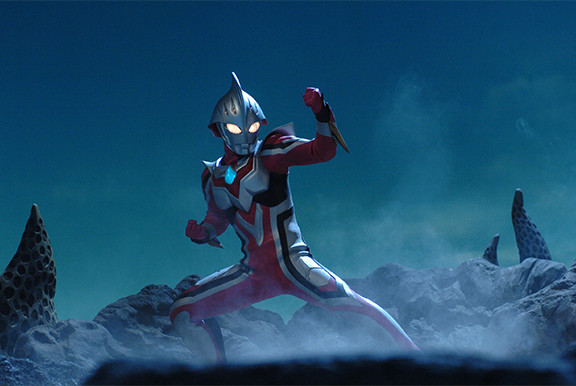
As one would expect, the story of Ultraman Nexus began where many stories in Japanese pop culture descend from. Devilman. Specifically Lady Devilman. The soon to be head writer of Nexus (Keiichi Hasegawa), was working on the OVA series with fellow Ultraman writer Chiaki J. Konaka. When they were working, they started to think of an idea that essentially broke down to what if Devilman met Ultraman in some sort of crossover fashion. From there it evolved into an Ultraman project that took on darker, serious, and more “mature” themes like in Devilman. Under the codename Project YELLOW EYES. Project YELLOW EYES would be about a Vietnam war veteran named Jun Himeya gaining the powers of Ultraman, and getting power-drunk along the way as we explore the themes of heroism and what one would do if they had the powers of Ultraman. This movie would’ve been very intense and unforgiving with its approach. Surprisingly it did get approved by Tsupro and they began to work towards making it into a movie.
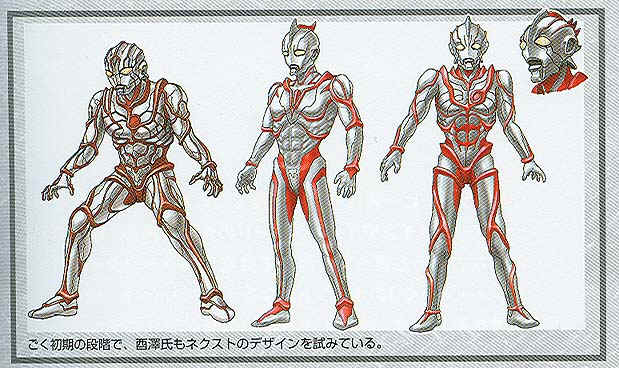
Things were going along smoothly until the 2001 9/11 Terrorist Attacks. The people at Tsupro decided that Project YELLOW EYES as it was wasn’t right for the current climate and needed to be changed and shelved until things calmed down. These changes would result in a movie very similar to ULTRAMAN: THE NEXT. However, it was nowhere near ULTRAMAN: THE NEXT yet. Due to the fact that Project N didn’t begin until late 2003. At the time Project YELLOW EYES was still very much its own independent thing. That changed though, with an Ultra show that never came to be. This Ultraman show was named Ultraman Cross. This new show was going to be about… … what it was going to be about? The creators of the “show” don’t even remember in full. What they remember was a show about a bunch of dropouts/rejects without a real place in the world all gaining the ability/passing around the ability to become Ultraman. These troubled… youths (it might’ve been older people) would have to deal with the brunt of being Ultraman as well as the struggles of their regular lives. They were designed to be the furthest thing from the standard model of an Ultraman defense team and host. To reflect how odd and different their situation was, the Ultra designs for the show were planned to be rather out there as well. The idea of hosts sharing powers stemmed from head producer Hiroyasu Shibuya and how he felt a baton was passed to him when he was chosen to take over the role of head Ultra producer (as well as his history of running relay races).
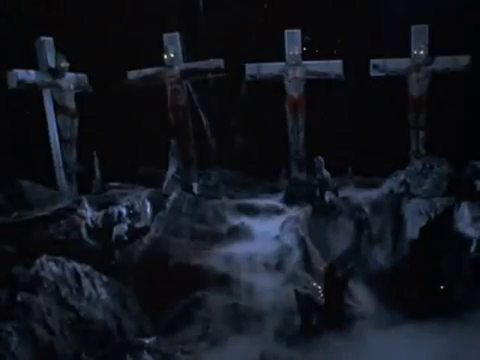
This wasn’t what the show was gonna be about, but hey, it is Ultra and crosses.
However, Ultraman Cross was really really struggling to get past conceptualization. They couldn’t figure out what the show should be about, what the plot would be about, the characters in it; essentially all they had was a concept they thought was cool. At this moment, they remembered, experienced Ultra writer Keiichi Hasegawa was working on an Ultra movie in the same building as them, at the same time. They went to him with the idea of maybe connecting the two works together, hoping that the upcoming movie could provide a base for a show for them. Hasegawa was happy to help, in fact, he was so interested in the project and the idea of passing on Ultraman’s powers (which reminded him of Jojo’s Bizarre Adventure), he wanted to be part of it. He wanted to expand the experiment he was making with Project YELLOW EYES and he viewed this as an opportunity to do just that. The people that were working on Ultraman Cross were happy to get him on the project, though Ultraman Cross no longer existed, from this point on it was all Project N.
Project YELLOW EYES and Ultraman Cross were now fused together under that new banner. YELLOW EYES would now take the name of ULTRAMAN: THE NEXT, a movie that would come out before the show and serve as a prequel to the upcoming series and provide the building blocks of the universe. The show, now named Ultraman Nexus, would use concepts left over from the original drafts of Project YELLOW EYES, but very much toned down, milder as Hasegawa would like to say. Hasegawa had a very strong vision for the show and thus was able to blow through the conceptualizing and planning stages. By the time actors were auditioning for the show, they knew everything about every single twist and turn of the series from beginning to end. Scriptwriting went by rather easily too. People put a lot of trust in Hasegawa’s vision and he had built up a lot of ideas for the series over the last four years since he first worked on Lady Devilman. It is worth noting though, that most concepts from Ultraman Cross were long gone at this point and forgotten beside the idea of swapping Ultraman hosts.
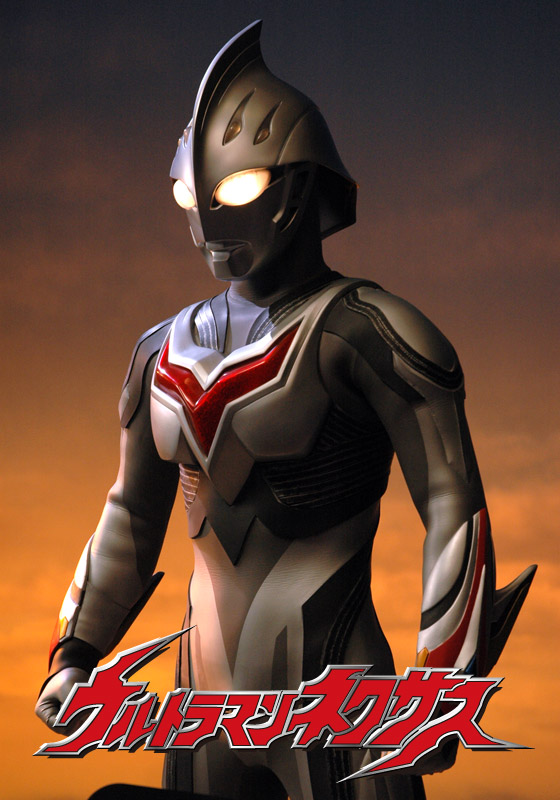
This idea of swapping hosts played into the design of the central Ultra for Nexus too. Nexus through his forms would for a lack of a better term, “grow up”, with each form he took. His base state would be pure silver and youthful-looking, named Anphans, based off of the French word for infant. Anphans was designed to look gender-neutral and like anyone could be it. This gender-neutrality is emphasized in works such as stage shows were Nexus addresses themselves with pronouns that reflect that aspect (as well as a more toddler-like speech pattern). The Junis forms would be as if Nexus was “growing up”. He would take on traits of his hosts and become more adult-like, in stage shows he uses pronouns and speaks in manners similar to the hosts commonly associated with those states (Junis Red reflecting Himeya and Junis Blue reflecting Ren). Noa was the final state of Nexus, all grown up and all-encompassing, even God-like. In subsequent media, Noa keeps using gender-neutral pronouns and addresses themselves with terms usually reserved for god-like figures. Hiroshi Maruyama also made multiple drawings featuring more feminine versions of Noa and Nexus in his spare time. Also, samurais helped influence Nexus’s design, cause samurais are cool.
As a side note, Ultraman: The Next’s design was thought up way earlier during the Project YELLOW EYES phase of the work. It was based on an old concept for Ultraman where the silver parts of Ultraman’s “skin” was meant to be metal armor and the red parts, pure muscle. The Next was meant to be a total reinvention of Ultraman that still retained traditional aspects of the hero, such as the wrinkled face of the Type A mask. Maruyama wanted The Next, to be strange and mutant. Incomplete, like it was just freshly made out of clay. Which in the long run helped the idea of Nexus evolving and becoming more refined over the course of the show.
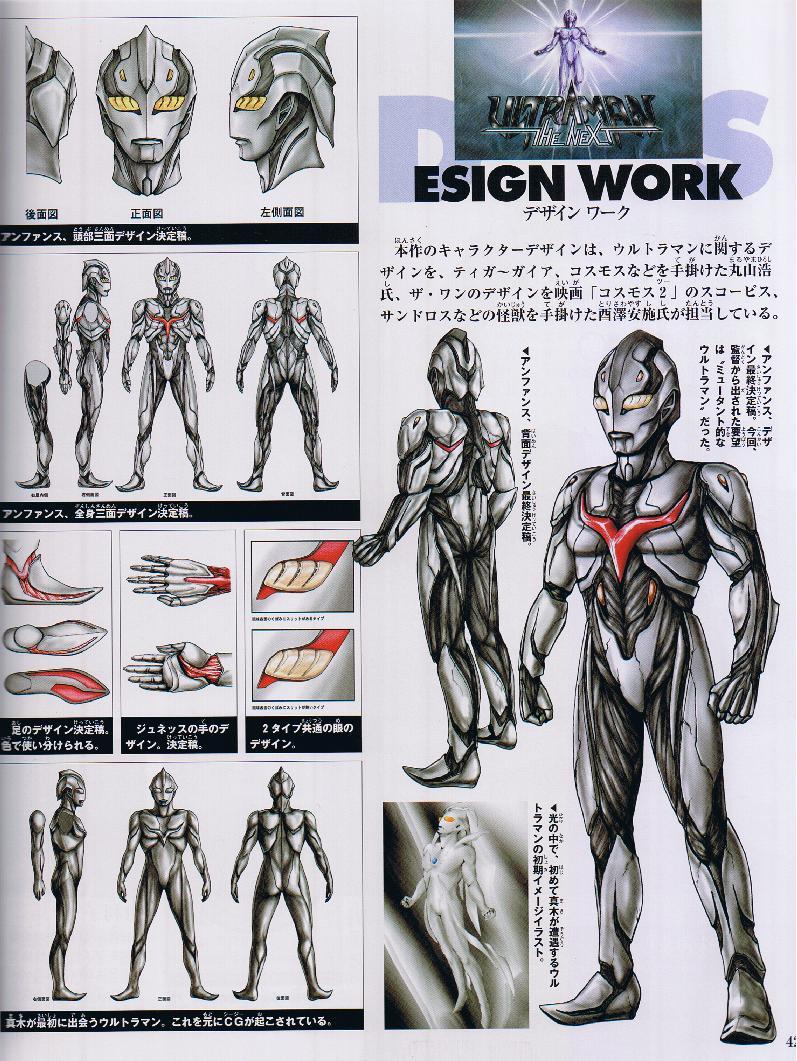
When the show entered production, the executive chaos finally reached the creatives working on Nexus. The old spending habits of the Kazuo Tsuburaya era where a show had no real set budget per episode and an entire show could cost at least 52 million USD to over 100 million USD (the reports are very scattered and the claims on how much he was spending were extremely all over the place, one iconic example was when he spent 32 million USD on a single episode), wasn’t allowed anymore. Nexus got hit hard by a limit of around 0.9 million USD per episode, which if it was a full series would be around 46 million USD or less. No exceptions in spending would be allowed. This change in spending also greatly affected ULTRAMAN: THE NEXT. Production slowed down there and it took much longer to finish, no longer would it premiere before Nexus, but rather sometime during the show’s run, making it harder to understand what was happening in the series.

The budget cuts greatly affected how they would approach making Nexus a reality. In an instant, most of the options for practical effects greatly shrunk. The number of kaiju suits they could make got drastically reduced, there was a limit to how many sets and sound stages they could have, and they couldn’t film on location often due to not being able to rent places for long. As a workaround for this, they developed concepts like the metafield which would allow them to use one set repeatedly and reusing kaijus by making them stronger, run away more often, or have regenerative properties. Another workaround was the usage of CGI. They had always been planning to use CGI in Nexus to do more grand sequences and effects not possible by normal means, but under the strict budget, CGI had to replace multiple practical aspects of the show. When news of this usage leaked to the public, many traditional Ultra fans were angry and entirely wrote off the show before it even hit the air.

Public perception of Nexus and THE NEXT was a big issue for the show. What had leaked about the show, ranging from the CGI usage to general plot details, turned off some older/more traditional fans. However, the staff stuck to their guns believing that when the show hit the air, adult fans of Ultra would flock to the series and find something they would truly enjoy. Though Nexus wouldn’t get that chance to wow a lot of its adult viewership, due to the fact of it losing its time slot to Mobile Suit Gundam SEED Destiny. Which the network thought would be a far more successful show. The show had already filmed 12 episodes when they got this news about the timeslot change: making it impossible to go back and change the show to be something more fitting to their new daytime mostly child filled audience. The staff working on the show hoped that the children watching it would grow to appreciate Nexus when they were older. Nexus continued to truck forward, trying to keep in line with its original vision as much as possible.
While executives did meddle in the show here and there, they did nothing major to change the direction or feel of the show. It is a common misconception that the change in tone in the second half of the show was caused by executive meddling, this is not true. This change was always planned. All the execs asked Hasegawa and the team to do was make the fights more dynamic and flashy, which Hasegawa did by giving Junis Blue moves that directly reference iconic figures of Japanese pop culture such as Brave Raideen, Great Mazinger, and Voltes V to name a few.

They trusted Hasegawa and his team’s vision and hoped for the best out of them. Though, Bandai however, wanted to maximize profits, even though this wasn’t the best series to push toys in. Knowing that the series was tight on money, Bandai thought up a good toy that would be simple to produce on both their side and the show side. Bandai would come and suggest a villain for the series. This villain was BLACK NOA! BLACK NOA was just a sofubi of Noa that head designer Hiroshi Maruyama painted black and red everywhere except for the eyes. The creative staff of Nexus, honestly really liked the idea and it only took them one planning stage to insert BLACK NOA into the story, now under the name Zagi, but with some minor design changes and red eyes. Bandai did not know they changed the eyes from yellow to red until after they started producing Zagi toys, this would be a problem for later.

Nexus would hit TV on October 2nd, 2004 to a strongly rated first episode, but that wouldn’t stay. The ratings would drop like a rock going to 3% to 2% to even in the 1%s before averaging out in the 2% range. Children were not remotely interested in Nexus’s story and adult fans that might’ve tuned into the show were unable to watch due to the time it aired or were perhaps turned off by a series of scathing reviews in one of the largest newspapers in all of Japan, the Asahi Shimbun. These reviews ruined the public perception of Nexus to the masses, and only affirmed the thoughts that those already dismissed the series had. These reviews are noted for coming off as rather biased and angry that a show like Nexus exists at all. They called the show cheap, hamfisted, and a shallow drama desperately crying for adult’s attention. The situation only got worse when parent groups found out about the show and got extremely mad at the content being exposed to their children. Perhaps due to executive neglect, Nexus continued to work without issue and moved on unaffected by the reviews and public perception.
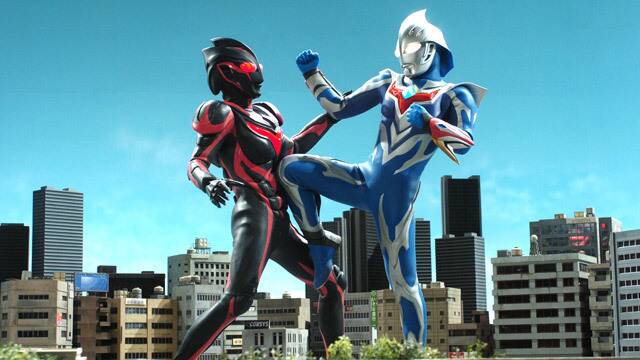
Until the poor ratings of the show caused the network to lose complete faith in the work. In all honesty, support of Nexus was dropping like dominoes in a line. It began at a public level, which was ignorable. The real issues, however, began when the toy sales dropped hard. Pushing Nexus related products was difficult, most merchandise they attempted to sell wouldn’t get off the ground. The toys especially. Toy retailers that picked up merch for the show were barely able to make a profit off of them, the products would just sit on the shelf and collect dust. It got to the point where many retailers straight up refused to pick up future merchandise for the show. That changed, however, when Bandai released the yellow-eyed Zagi sofubis. The yellow-eyed Zagi sofubis didn’t match with Zagi in the promotional material. People refused to buy these “misprints”. This resulted in further friction with the remaining toy sellers who felt Bandai and Tsupro were just getting lazy at this point. Once again they began to back away, feeling Nexus was a dud and that pushing the products for the show was impossible.

Running commercials during the show became cheaper, sponsors were weary, and ratings were far from improving. The network, TBS, felt there was only one option left at this point. Pull the plug and cancel the show. Like that, it was done. Ultraman Nexus’s run got dropped down to 37 episodes, 13 less than the original 50. The cancellation was extremely sudden and no one working on the show honestly saw it coming. Writer Ai Ota was the angriest about the cancellation, having just finished scripting the entire next arc of the show when the news dropped.
This next arc of the show was meant to be Zagi’s arc. In this arc, Zagi was going to be a rabid destructive force viciously hunting Nexus as Nexus hopped from host to host trying to avoid his new foe. Nexus would move from Shiori Hiraki to Mizuo Nonomiya (or vice versa) until reaching Nagi Saijyo. Nagi as Nexus’s host would eventually travel to the past where she would save the young child version of Kazuki Komon from drowning and learn the source of Komon’s steadfast beliefs and earnest heart. Upon understanding Komon, Nagi would transfer Nexus to Komon (in the future), where he would take the form of Noa to finally destroy Zagi, ending the hunt and the life of the dark replica. Each one of Nexus’s hosts would gain their own unique Junis state of varying colors that would reflect Nexus’s current host’s features. This arc would not be the final arc of the show, however. The final confrontation of the show would be the true villain, known as Lucifer. Not much is known about Lucifer and what his arc was going to be like, but it is assumed that the ideas meant for that arc was adapted into the Nexus light novel Hasegawa made entailing Komon and Noa confronting the “demon” after a time-skip. In the finale of the show, aspects of the battle against Lucifer and Lucifer’s personality were folded into Zagi.

Even the renewed sense of interest in the series by the public at large wasn’t enough to turn things around. In fact, the boost of ratings was rather short-lived compared to past movie release-tv show synergy. Nexus continued to chug along with lackluster ratings until finally peaking at its finale, getting its highest ratings in the entire series at 6.7% which was double the average.

It is important to note, that Nexus wasn’t meant to be a big change in Ultra. Nexus was always meant to be a weird one-off experiment. ULTRAMAN 2 REQUIEM was only planned to give the show more of a proper ending before it too got canceled. There was an entirely wide variety of concepts being worked on while Nexus was airing ranging from a show about a group of Ultras with elemental powers (which would’ve featured a lot of lady Ultras), a more traditional show in line with the Showa formula, bringing back Ultraman Justice, and even the original ideas for Mebius. All the failure of Nexus did was make the creatives of Tsupro lean towards that more traditional direction. The people most affected by the failure of Nexus were the executives. Hideki Tsuburaya lost his position because of the series and upper management was thoroughly restructured. If you want to hear more about that, go to the Mebius article.
Nexus wasn’t meant to be a new starting point for Ultra. Nor was it in any means meant to be the thing that would save Tsupro from its current financial situation, it is likely that nothing could’ve. And to flip to the other side of the coin, it wasn’t the Tsupro killer, regardless of how Nexus ended, Tsupro was still able to keep making shows past that point at their somewhat normal quality and capacity. So what does that make Nexus? What place does it have in the grand story of Ultraman?
Ultraman Nexus is perhaps the greatest testament to the creativity and fluidity of the Ultraman franchise. How it can take so many forms, wear so many faces, and always still feel, feel like Ultra. Ultra as I stated time and time again, is something wide and expansive, anything can feel like it has a place in the elaborate tapestry of the series. It is a series that allows people to express their creativity in a variety of ways. Ultraman as a series is always pushing itself to go somewhere new, somewhere different. No matter what, these shows also come together and bond in some sort of grand nexus.

Nexus is a story of creatives that knew this. That knew of the strength of these bonds and never backed down. Even in the face of cancellation, they made a show, a show that embodies Ultra in so many ways. A show, in the end, they were all proud to be part of and make. A show that told us it was time for a transformation. That you should get stronger for someone else. That if you can speak out and say what’s right. Then you too, could be a hero. Alright?
Sources
- https://ja.wikipedia.org/wiki/%E3%82%A6%E3%83%AB%E3%83%88%E3%83%A9%E3%83%9E%E3%83%B3%E3%83%8D%E3%82%AF%E3%82%B5%E3%82%B9
- https://ja.wikipedia.org/wiki/ULTRA_N_PROJECT
- https://ja.wikipedia.org/wiki/ULTRAMAN_(%E6%98%A0%E7%94%BB)
- Ultraman Nexus & Ultraman Max TV-Kun
- Ultraman Nexus Series Encyclopedia
- Hiroshi Maruyama Special Effects Design Works
- https://www.youtube.com/watch?v=g3BSbgeq4jc
- https://www.youtube.com/watch?v=x6557cGaCmM
- https://www.youtube.com/watch?v=jVEo_JkI57Y
- https://www.youtube.com/watch?v=6QGJ4XxyT4I
- https://www.youtube.com/watch?v=MLY9-lz0Tl8
- https://ja.wikipedia.org/wiki/%E3%82%A6%E3%83%AB%E3%83%88%E3%83%A9%E3%83%9E%E3%83%B3%E3%83%8E%E3%82%A2
- https://dic.nicovideo.jp/a/%E3%82%A6%E3%83%AB%E3%83%88%E3%83%A9%E3%83%9E%E3%83%B3%E3%83%8D%E3%82%AF%E3%82%B5%E3%82%B9
- https://dic.pixiv.net/a/%E3%82%A6%E3%83%AB%E3%83%88%E3%83%A9%E3%83%9E%E3%83%B3%E3%83%8D%E3%82%AF%E3%82%B5%E3%82%B9
- https://news.mynavi.jp/article/20190725-ultraman/
- https://www.youtube.com/watch?v=RwSpMBQkp6M
Great article. One thing I always wondered is how well did Ultraman The Next perform at the box office.
LikeLike
Thank you for article!, im really wishing for nexus season 2 or continuation type of thing will be made from tsuburaya and get aired on the streaming service since we know now that could make nexus more justice, we can look at the success of an R Rated series of Kamen Rider Amazons..
LikeLike